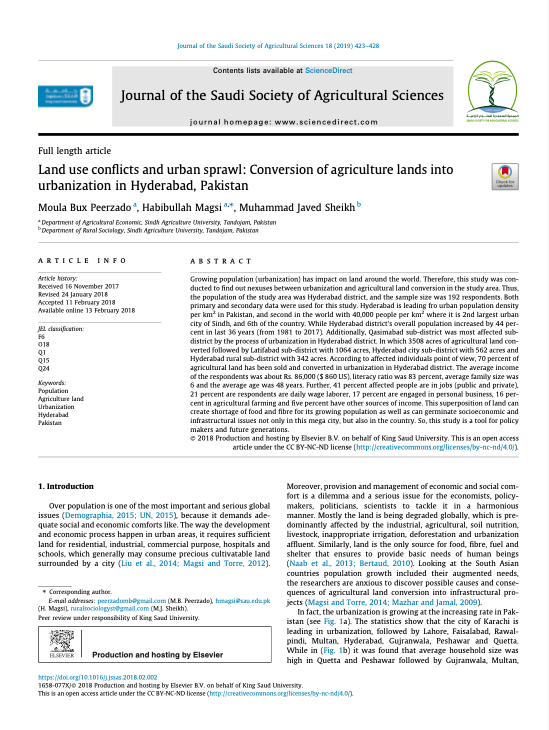Resource information
Growing population (urbanization) has impact on land around the world. Therefore, this study was con- ducted to find out nexuses between urbanization and agricultural land conversion in the study area. Thus, the population of the study area was Hyderabad district, and the sample size was 192 respondents. Both primary and secondary data were used for this study. Hyderabad is leading fro urban population density per km2 in Pakistan, and second in the world with 40,000 people per km2 where it is 2nd largest urban city of Sindh, and 6th of the country. While Hyderabad district’s overall population increased by 44 per- cent in last 36 years (from 1981 to 2017). Additionally, Qasimabad sub-district was most affected sub- district by the process of urbanization in Hyderabad district. In which 3508 acres of agricultural land converted followed by Latifabad sub-district with 1064 acres, Hyderabad city sub-district with 562 acres and Hyderabad rural sub-district with 342 acres. According to affected individuals point of view, 70 percent of agricultural land has been sold and converted in urbanization in Hyderabad district. The average income of the respondents was about Rs. 86,000 ($ 860 US), literacy ratio was 83 percent, average family size was 6 and the average age was 48 years. Further, 41 percent affected people are in jobs (public and private), 21 percent are respondents are daily wage laborer, 17 percent are engaged in personal business, 16 percent in agricultural farming and five percent have other sources of income. This superposition of land can create shortage of food and fibre for its growing population as well as can germinate socioeconomic and infrastructural issues not only in this mega city, but also in the country. So, this study is a tool for policy makers and future generations.


